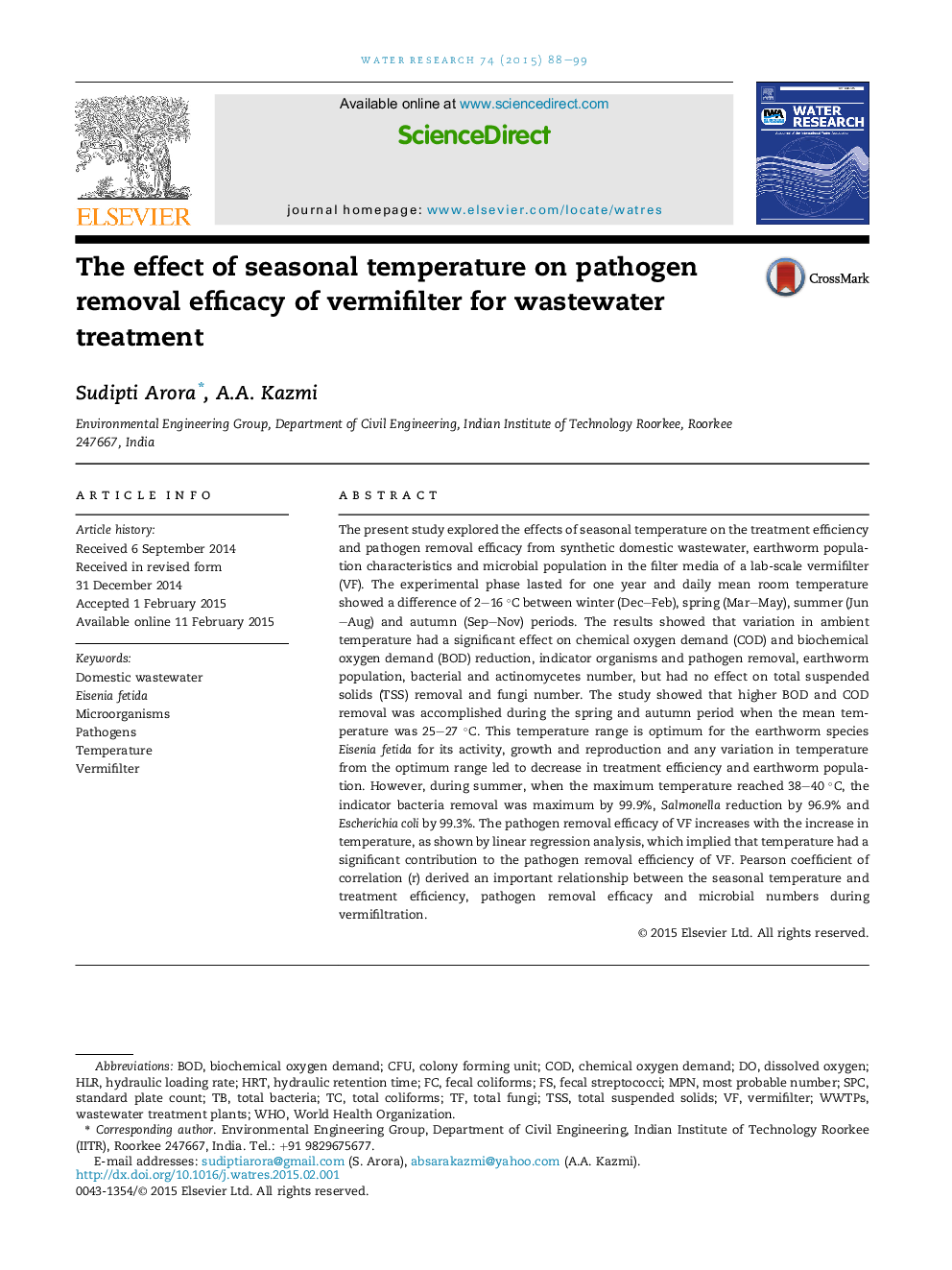| کد مقاله | کد نشریه | سال انتشار | مقاله انگلیسی | نسخه تمام متن |
|---|---|---|---|---|
| 4481267 | 1623094 | 2015 | 12 صفحه PDF | دانلود رایگان |
• Highest BOD and COD removal efficiency was observed in spring and autumn period.
• Highest pathogen removal efficacy was observed in summer season.
• Optimum temperature range for earthworm sp. Eisenia fetida is 25–30 °C.
• Deviation in temperature from optimum range lead to reduced treatment efficiency.
• Temperature had a positive correlation with all parameters except TSS and fungi.
The present study explored the effects of seasonal temperature on the treatment efficiency and pathogen removal efficacy from synthetic domestic wastewater, earthworm population characteristics and microbial population in the filter media of a lab-scale vermifilter (VF). The experimental phase lasted for one year and daily mean room temperature showed a difference of 2–16 °C between winter (Dec–Feb), spring (Mar–May), summer (Jun–Aug) and autumn (Sep–Nov) periods. The results showed that variation in ambient temperature had a significant effect on chemical oxygen demand (COD) and biochemical oxygen demand (BOD) reduction, indicator organisms and pathogen removal, earthworm population, bacterial and actinomycetes number, but had no effect on total suspended solids (TSS) removal and fungi number. The study showed that higher BOD and COD removal was accomplished during the spring and autumn period when the mean temperature was 25–27 °C. This temperature range is optimum for the earthworm species Eisenia fetida for its activity, growth and reproduction and any variation in temperature from the optimum range led to decrease in treatment efficiency and earthworm population. However, during summer, when the maximum temperature reached 38–40 °C, the indicator bacteria removal was maximum by 99.9%, Salmonella reduction by 96.9% and Escherichia coli by 99.3%. The pathogen removal efficacy of VF increases with the increase in temperature, as shown by linear regression analysis, which implied that temperature had a significant contribution to the pathogen removal efficiency of VF. Pearson coefficient of correlation (r) derived an important relationship between the seasonal temperature and treatment efficiency, pathogen removal efficacy and microbial numbers during vermifiltration.
Figure optionsDownload high-quality image (279 K)Download as PowerPoint slide
Journal: Water Research - Volume 74, 1 May 2015, Pages 88–99
